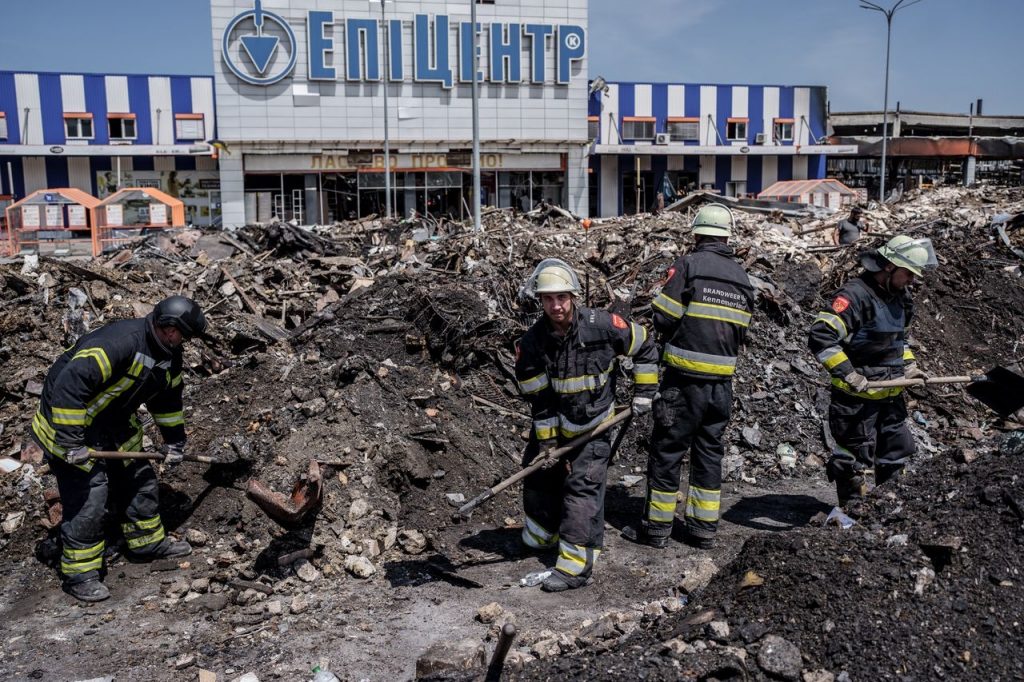FASANO, Italy—President Biden and key European leaders reached an agreement to finance Ukraine with a loan of up to $50 billion, backed by the profits on frozen Russian assets .
Key details of the financing arrangement still need to be agreed, but the leaders, meeting at a summit of the Group of Seven major advanced economies, hope it will shore up Ukraine’s finances as it fights against the two-year-old Russian invasion.
Separately, Biden and Ukrainian President Volodymyr Zelensky are expected to unveil a bilateral security agreement that seeks to establish a long-term U.S. commitment to military aid for the embattled country.
The steps by G-7 leaders at the summit in southern Italy represent the latest effort by Western allies to signal their commitment to supporting Ukraine’s defense with arms and funding, despite political divisions within the U.S. and Europe creating uncertainty about the longevity of that support.
Russian President Vladimir Putin has redoubled the military pressure on Ukraine in recent months, exploiting the sputtering flow of Western military aid to badly damage Ukraine’s energy grid with missile attacks and expanding Russia’s ground offensive in eastern Ukraine.
G-7 leaders aimed to announce the framework of an agreement to use the investment returns, mainly interest payments, generated from roughly $300 billion in Russian sovereign assets that the U.S. and Europe froze after Russia launched its full-scale invasion of Ukraine. Most of the Russian central bank assets are held in Europe.
The plan seeks to create a new financial instrument to provide Kyiv with years’ worth of expected profits on Russian assets.
U.S. and French officials said they hope the disbursements can start flowing to Ukraine by the end of the year.
A senior Biden administration official said G-7 leaders had a “political agreement at the highest levels for this deal. And it is $50 billion…that will be committed.”
Zelensky, one of several world leaders invited to join the three-day summit at a luxury resort in the Italian region of Puglia, was due to hold a joint news conference with Biden late on Thursday.
The U.S.-Ukraine security pact seeks to commit future administrations to work with Congress to provide funding and military support for Kyiv. It makes no new promises regarding Ukraine’s bid to join the North Atlantic Treaty Organization. White House officials acknowledge that future U.S. presidents could withdraw from the bilateral agreement, which isn’t a treaty and doesn’t require congressional approval. It also has no dollar amount of military funding attached.
Ukraine has already signed a series of similar pacts with European and other countries, some of which have spelled out specific future support.
Former President Donald Trump , who faces Biden in November’s rematch election, has said he believes he could persuade Putin to negotiate an end to the war and has questioned why the U.S. has been sending billions of dollars worth of military and financial aid to Ukraine.
But Trump quietly consented to the passage of a short-term military-aid package for Ukraine and endorsed proposals by some Republicans to support Ukraine in the form of a loan.
White House national security adviser Jake Sullivan told reporters Thursday that the security agreement with Ukraine was a “real marker of our commitment, not just for this month, this year, but for many years to support Ukraine, both in defending against Russian aggression and in deterring future aggression so that Ukraine can be a sovereign, viable, thriving democracy.”
Sullivan told reporters traveling aboard Air Force One Wednesday that it would send Russia “a signal of our resolve. If Vladimir Putin thinks that he can outlast the coalition supporting Ukraine, he’s wrong. He just cannot wait us out.”
Ukraine desperately needs continued financial support. A separate loan package from the European Union worth 50 billion euros, equivalent to around $54 billion, is intended to help shore up Kviv’s ability to pay for basic government services, salaries and pensions through 2027.
In addition, the World Bank estimated in February that Ukraine’s reconstruction costs after the war will total close to $500 billion.

Firefighters work at a site of a households item shopping mall hit by a Russian military strike, amid Russia’s attack on Ukraine, in Kherson, Ukraine June 6, 2024. Press service of the State Emergency Service of Ukraine in Kherson region/Handout via REUTERS
The planned $50 billion in financing for Kyiv backed by Russian assets must still overcome differences between Washington and European capitals on the technical details of how to structure the funding and how the risk on the loans should be shared.
European officials have said in recent days they envisage much of the funding would flow via existing EU programs for Ukraine. They also want the U.S. to help guarantee the loan so that if profits from the Russian assets stop flowing in, Europe won’t have to foot the bill alone.
The EU wants the loan to pay mainly for military aid for Ukraine, in line with a previous agreement it made on how to use the windfall profits, which are expected to total around $3 billion to $4 billion a year. The EU also wants to make sure their companies win some of the contracts for the civilian or military work that Ukraine spends the money on.
Washington had been pushing for a loan to be made by a special purpose vehicle managed by the World Bank, with the U.S. and its G-7 partners supplying the money upfront. The U.S. is concerned that the flow of profits from frozen Russian assets could be halted in Europe if Hungary, whose leader Viktor Orban has long had close relations with Moscow, vetoes the continued EU sanctioning of Russian assets. Authorization for the asset freeze and other EU sanctions must be renewed every six months.
European officials have said resolving the technical details could take many weeks. Sullivan said G-7 leaders planned to set a clear timetable for experts to agree on details.
Write to Ken Thomas at ken.thomas@wsj.com and Laurence Norman at laurence.norman@wsj.com


